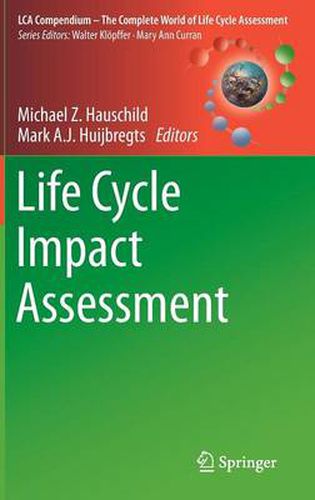Readings Newsletter
Become a Readings Member to make your shopping experience even easier.
Sign in or sign up for free!
You’re not far away from qualifying for FREE standard shipping within Australia
You’ve qualified for FREE standard shipping within Australia
The cart is loading…






This title is printed to order. This book may have been self-published. If so, we cannot guarantee the quality of the content. In the main most books will have gone through the editing process however some may not. We therefore suggest that you be aware of this before ordering this book. If in doubt check either the author or publisher’s details as we are unable to accept any returns unless they are faulty. Please contact us if you have any questions.
This book offers a detailed presentation of the principles and practice of life cycle impact assessment. As a volume of the LCA compendium, the book is structured according to the LCIA framework developed by the International Organisation for Standardisation (ISO)passing through the phases of definition or selection of impact categories, category indicators and characterisation models (Classification): calculation of category indicator results (Characterisation); calculating the magnitude of category indicator results relative to reference information (Normalisation); and converting indicator results of different impact categories by using numerical factors based on value-choices (Weighting).
Chapter one offers a historical overview of the development of life cycle impact assessment and presents the boundary conditions and the general principles and constraints of characterisation modelling in LCA. The second chapter outlines the considerations underlying the selection of impact categories and the classification or assignment of inventory flows into these categories. Chapters three through thirteen exploreall the impact categories that are commonly included in LCIA, discussing the characteristics of each followed by a review of midpoint and endpoint characterisation methods, metrics, uncertainties and new developments, and a discussion of research needs. Chapter-length treatment is accorded to Climate Change; Stratospheric Ozone Depletion; Human Toxicity; Particulate Matter Formation; Photochemical Ozone Formation; Ecotoxicity; Acidification; Eutrophication; Land Use; Water Use; and Abiotic Resource Use. The final two chapters map out the optional LCIA steps of Normalisation and Weighting.
$9.00 standard shipping within Australia
FREE standard shipping within Australia for orders over $100.00
Express & International shipping calculated at checkout
This title is printed to order. This book may have been self-published. If so, we cannot guarantee the quality of the content. In the main most books will have gone through the editing process however some may not. We therefore suggest that you be aware of this before ordering this book. If in doubt check either the author or publisher’s details as we are unable to accept any returns unless they are faulty. Please contact us if you have any questions.
This book offers a detailed presentation of the principles and practice of life cycle impact assessment. As a volume of the LCA compendium, the book is structured according to the LCIA framework developed by the International Organisation for Standardisation (ISO)passing through the phases of definition or selection of impact categories, category indicators and characterisation models (Classification): calculation of category indicator results (Characterisation); calculating the magnitude of category indicator results relative to reference information (Normalisation); and converting indicator results of different impact categories by using numerical factors based on value-choices (Weighting).
Chapter one offers a historical overview of the development of life cycle impact assessment and presents the boundary conditions and the general principles and constraints of characterisation modelling in LCA. The second chapter outlines the considerations underlying the selection of impact categories and the classification or assignment of inventory flows into these categories. Chapters three through thirteen exploreall the impact categories that are commonly included in LCIA, discussing the characteristics of each followed by a review of midpoint and endpoint characterisation methods, metrics, uncertainties and new developments, and a discussion of research needs. Chapter-length treatment is accorded to Climate Change; Stratospheric Ozone Depletion; Human Toxicity; Particulate Matter Formation; Photochemical Ozone Formation; Ecotoxicity; Acidification; Eutrophication; Land Use; Water Use; and Abiotic Resource Use. The final two chapters map out the optional LCIA steps of Normalisation and Weighting.